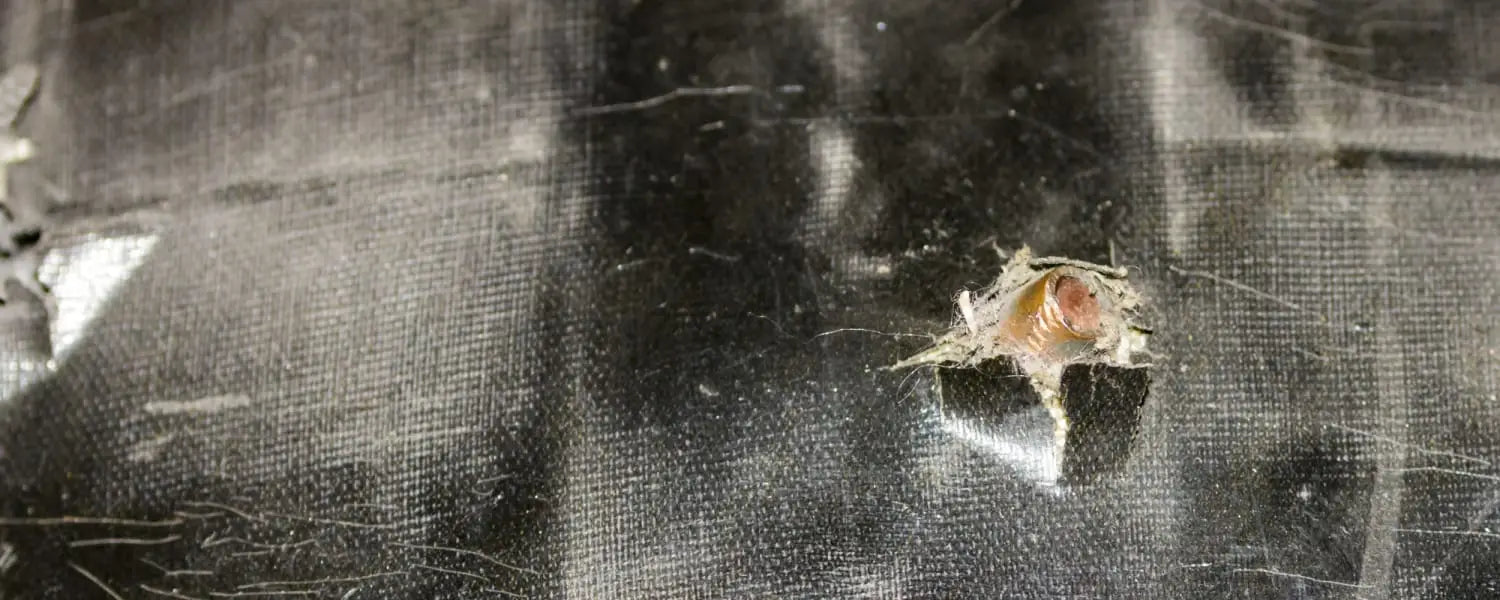Backface signature is the amount of deformation, or damage, created on the backside of a piece of armor after an impact. The amount of backface signature is defined by the quality of your armor, along with the speed, velocity, weight, and caliber of the projectile. The more backface signature a piece of armor allows, the greater the damage and injuries the wearer will sustain. In addition to quality armor, backface signature can be minimized by the addition of trauma pads.
NIJ STANDARDS FOR BACKFACE SIGNATURE
The National Institute of Justice (NIJ) is the organization that sets the standards for body armor. The limit of deformation allowed by the NIJ is 1.73 inches (44mm) in depth for body armor. All vests are required to be tested against materials that mimic the human body. Once the test has been completed, the vest is removed to allow measurements of the deformation. To accurately measure the depth of impact, any ridges created by impact are scraped to be flush with the surface of the ballistic testing material. Then a caliper is used to accurately measure the depth of the impact. If the depth of the impact exceeds 1.73 inches (44mm), the armor fails the ballistic testing. Citizen Armor has consistently outperformed other soft body armor with a 20% decrease from the NIJ allowed standards, resulting in a significant reduction to possible back face signature.
HOW TO REDUCE BACKFACE SIGNATURE
With up to 1.73 inches allowed for backface signature, you can imagine the potential for injury even when a bullet is stopped. Projectiles traveling at hundreds of feet per second are still going to cause some damage. It is common for individuals who have been shot wearing body armor to have significant bruising, burn marks, and sometimes broken bones. Burn marks are typically from heat associated with the stopping and deformation of the projectile.
To reduce backface signature and injury, wearers of body armor can include trauma pads. Trauma pads act as a buffer between the bulletproof vest and the wearer’s body. They help reduce the amount of backface signature, along with absorbing some of the energy from the projectile, instead of the wearer’s body. With many sizes available, you can reduce BFS on the front, back, and even sides if your armor carrier contains storage compartments for additional plates and pads.
WHAT IS BLUNT FORCE TRAUMA?
Blunt force trauma is the result of an impact that does not involve penetration. It is one of the most common causes of death, according to forensic pathologists. For example, most deaths associated with traffic collisions are the result of blunt force trauma. More relevant to the subject matter in this post are injuries to frontline professionals such as law enforcement officers, military personnel, and those in combat situations. When the body is hit by a solid object such as a foot, fist, elbow, knee, or crowbar it can cause blunt force trauma.
When it comes to body armor, the severity of these types of injuries depends on the projectile, quality of the body armor, and if there are trauma pads present. The severity of injuries can range from a minor small bruise to rapid internal bleeding, ruptured organs, and even death.

